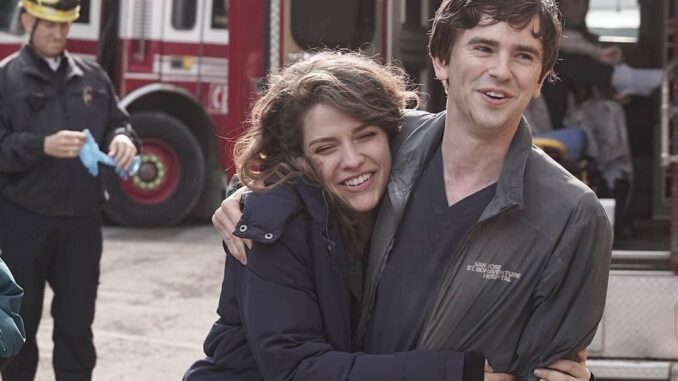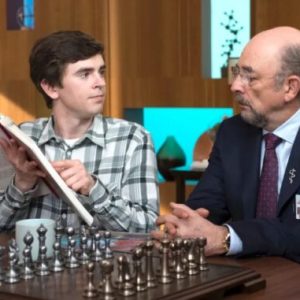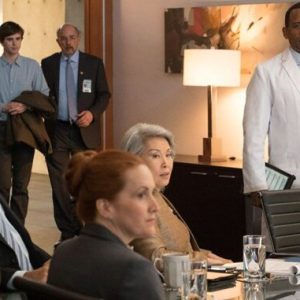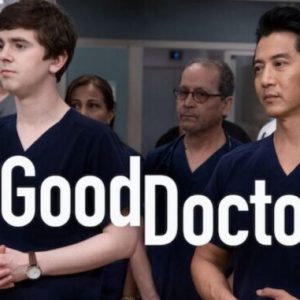In a show defined by its emotional depth and character complexity, few arcs feel as richly textured and human as that of Lea Dilallo. Introduced in Season 1 as the quirky, free-spirited neighbor who blasts loud music and drives a muscle car, Lea (played by the effortlessly charismatic Paige Spara) could have easily been a passing presence. But instead, The Good Doctor gave her room to grow—and in doing so, transformed her into one of the series’ emotional pillars.
Lea’s journey is not just one of romantic entanglement with Shaun Murphy. It is, at its heart, a story about self-discovery, emotional compromise, and the search for a true sense of home. She starts out as the woman who helps Shaun loosen up, offering a non-judgmental friendship that starkly contrasts with the clinical world he navigates daily. Their early connection is lighthearted and easy, but it hints at something deeper—a shared loneliness, a hunger for connection, and the unspoken question: What if?
As the series progresses, that “what if” becomes reality. Lea and Shaun’s romantic relationship doesn’t begin with fireworks—it unfolds slowly, sometimes painfully, over time. What makes their story so compelling is that it’s not a fairytale. It’s awkward. It’s frustrating. It’s full of misunderstandings, mismatched expectations, and moments where love alone simply isn’t enough.
Shaun, with his autism, approaches relationships with a logic-first mindset. Lea, by contrast, is emotionally intuitive but sometimes overwhelmed by the emotional labor that comes with dating someone whose communication style can feel rigid or impersonal. Yet what they both share is honesty. They try. They fail. They try again. And in that relentless effort to understand each other, their love story becomes one of the most authentic portrayals of modern relationships on television.

One of the most powerful chapters in their arc is their experience with pregnancy and miscarriage. When Lea discovers she’s pregnant, the news shakes both of them. For Shaun, it brings fear and uncertainty. For Lea, it triggers both excitement and panic. But they rally. They learn. They adapt. For a brief time, they seem to find a rhythm, preparing for the future together.
Then, heartbreak strikes.
Lea’s miscarriage is one of the show’s most emotionally raw moments. And rather than rushing through the grief, The Good Doctor lingers. It shows how loss affects not just the person physically experiencing it, but also their partner, their support system, and the fragile bond they were building. Shaun, uncertain how to help, struggles with expressing emotion in a way Lea needs. Lea, devastated and emotionally spent, doesn’t always know how to ask for what she needs. It’s painful, it’s messy, and it’s real.
What makes this arc resonate so deeply is Paige Spara’s performance. She brings a unique balance of vulnerability and strength to Lea. One moment, she’s breaking down under the weight of grief; the next, she’s picking herself back up with resilience and humor. Spara never lets Lea become a sidekick or accessory to Shaun’s growth—she’s a woman with her own evolution, fears, flaws, and triumphs.
Lea is also one of the few characters who challenges Shaun without condescending to him. She doesn’t always get it right—sometimes she overcompensates, other times she lashes out. But she never gives up. She meets Shaun where he is, and when she can’t, she learns to ask for help rather than walk away. That tension between unconditional support and personal boundaries is what makes their dynamic so layered.
Another compelling aspect of Lea’s development is her professional journey. She starts as a technician, then works in IT, eventually taking on a managerial role at the hospital. While her career path isn’t the central focus, it adds depth to her identity. She isn’t defined by her relationship with Shaun; she’s a driven, capable woman carving her own path in a male-dominated environment. Her workplace scenes often showcase her wit, competence, and adaptability—traits that mirror her approach to life outside of work.
Over time, Lea’s role in The Good Doctor shifts from peripheral to central—not just because of her romantic relationship, but because of the emotional weight she carries in the ensemble. She becomes the person others go to for advice, the one who reads the room when no one else can, the one who says the hard truths when they need to be said. She embodies a certain groundedness in a hospital where chaos and trauma are daily occurrences.
What also makes Lea’s presence so vital is how she helps illuminate new dimensions of Shaun. With her, we see his humor, his fear, his desire for connection. She pushes him to grow—not by fixing him, but by believing in him. And Shaun, in turn, helps her learn patience, structure, and the value of thinking before reacting. Their growth is mutual, their connection earned.
Their eventual marriage is not treated as a storybook ending, but as the next chapter in an ongoing journey—one that still requires work, compromise, and compassion. And that’s what sets their love story apart from so many others in television: it’s not about perfect compatibility. It’s about imperfect people choosing each other, over and over, despite the challenges.
Ultimately, Lea Dilallo’s evolution is one of becoming. From quirky neighbor to emotional anchor, from tech-savvy rebel to mother figure, from friend to partner, Lea transforms in a way that feels earned, lived, and deeply relatable. She is not an idealized character—she is a human one.
In a series filled with surgical miracles, dramatic diagnoses, and ethical quandaries, it is Lea’s emotional journey that reminds us what’s at stake when lives are on the line. Behind every patient chart and medical scan is a home, a relationship, a heart trying to heal. And through Lea, The Good Doctor never lets us forget that healing isn’t just physical—it’s emotional. And sometimes, the bravest thing you can do is stay, speak up, and try again.





